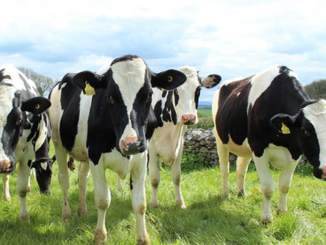Milk is nutrient rich, white liquid food produced by the mammary glands of mammals. The two major proteins in milk are casein and whey Casein is the chief component of milk proteins (80 percent of protein) of which about 30-35 percent is beta-casein. The major beta- casein variants are A1 and A2. A1 beta casein has histidine at the 67th position, while A2 beta-casein has proline. Holsteins and Ayrshire predominantly produce A1 milk while the European, Asian and African cows produce A2 milk. Beta-casomorphin-7 (BCM-7) is a bioactive seven-amino peptide released by digestive enzymes exclusively from the A1-beta-casein protein. It has been reported by several researchers that BCM-7 interacts with the human gastrointestinal tract, internal organs and brainstem. BCM7 adversely affects the immune response and is also considered as a risk factor for type 1diabetes and various neurological disorders. A2 milk is considered safe for human consumption. However, several other studies have found no relationship between A1 milk and the etiology of these diseases. Hence the present picture on A1vs A2 milk in concern to their health impacts is still unclear.
India is the number one producer of milk in the world and most of the Indian cattle breeds are A2 in nature. It seems that A1 milk is not a major problem for India, despite being the largest producer of milk in the world (187.7 Million Tonnes per annum-DAHD&F, 2019). Milk consists of about 87 percent water and 13 percent of milk solids constituting fat, lactose, minerals and protein. Based on genetic background of the animals Beta- casein may be of different types but the major types are A1 and A2. Beta-casein consist a chain of 229 amino acids. A2 milk having proline at 67th position of beta- casein amino acid chain and with histidine amino acid at this position is A1 milk. Sheep, goat, yaks, buffalo, camels, donkeys and Asian cows naturally contain more A2 beta casein protein. ‘Devil in the Milk’(book), in 2007, linking A1 β- casein intake with Type 1 diabetes, frightened milk consumers and gave a boost to the sale of A2 milk in New Zealand and Australia. Over 100 scientific papers on the adverse effects of A1 milk had been referred in this book and elaborated on how BCM-7 gets into the blood stream, when released in the gut, particularly of those who suffer from leaky gut syndrome. It further argued that in a similar way, BCM-7 can enter the blood stream of infants. BCM-7 was also linked with symptoms of autism and schizophrenia.
Some reports suggested that A1 milk had led to significantly higher stool consistency compared to A2 milk and a positive association existed between abdominal pain and stool consistency. According to some reports, after consuming milk or milk products, bioactive opioid peptide BCM-7 get released when the digestive enzymes in the gut react with A1 beta-casein, while A2 beta-casein releases much less BCM-7, under normal gut conditions. Although these preliminary results suggested differences in gastrointestinal responses in some adult persons consuming milk containing either A1 or A2 beta-casein type, but more confirmation was needed through a larger study of participants with perceived intolerance to ordinary A1 beta-casein-containing milk. In another study restricted to persons who had discomfort after milk consumption, sponsored by A2 Corporation, Deth et al(2016) reported that consumption of A2 milk was associated with a greater increase in plasma glutathione concentrations compared to the consumption of milk containing both β- casein types, and it did not increase plasma BCM-7 concentrations. They claimed that milk containing A2 β- casein has the potential to promote production of antioxidant glutathione in human beings.
Opinion on A1/A2 Milk
The negative health impacts of A1 milk reflected by many research reports. However, several studies have found possible evidence of A1 milk as a factor for causing diabetes and coronary heart disease. Any relationship between oral intake of BCM-7 and etiology of such diseases even could not fond by European food safety authority . Even no relation between A1 or A2 milk and diabetes and Coronary Heart Disease incidence have been reported by The Australian and New Zealand food safety Authorities. Thus, there is no evident remark on A1 milk being the risk factor for these diseases. To establish the association between A1 or A2 milk with the etiology of the above said diseases more research still need to be conducted. People in Europe and US have been consuming A1 milk for centuries and there have been no adverse effects of consuming this milk by the common public. No adverse effects found in people in India, who have been drinking crossbred cow milk for over 50 years. Hence, it is necessary to inform the common public about the safety of crossbred cow milk. In India buffaloes contribute about 50% of total milk produced, which has higher content of fat, protein, lactose and calcium and lower cholesterol, as compared to cow’s milk.
Conclusion
India is bestowed with a large number of dairy cattle and buffaloes producing the healthy A2 milk. Time has come to upgrade and pay attention for improvement and conservation of our indigenous germplasm so our local farmers can be benefited.








1 Trackback / Pingback